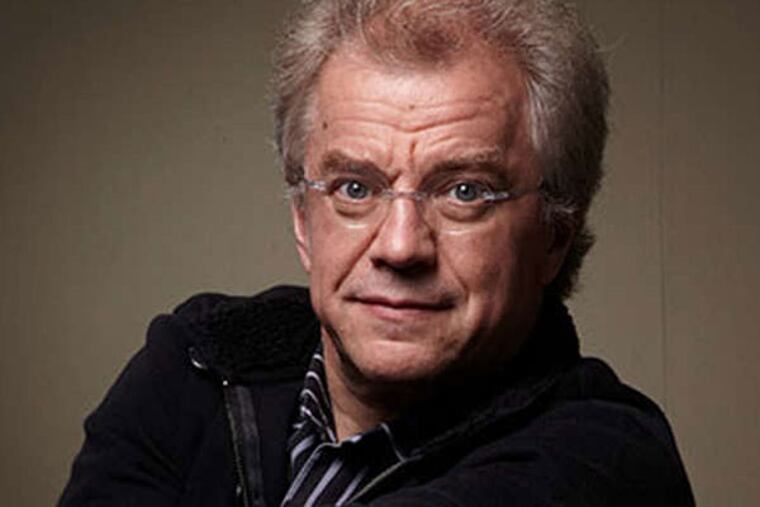Review: Under Vänskä, a Curtis triumph
Five or six decades have passed since Herbert von Karajan's advocacy for Sibelius established an international sound concept on the composer's coattails. Polished and cool, Karajan's recordings of the Sibelius symphonies might have done more to advance the cause of ensemble perfection than of the composer. They were beautiful and superficial.

Five or six decades have passed since Herbert von Karajan's advocacy for Sibelius established an international sound concept on the composer's coattails. Polished and cool, Karajan's recordings of the Sibelius symphonies might have done more to advance the cause of ensemble perfection than of the composer. They were beautiful and superficial.
And they were hardly the last word. Osmo Vänskä seemed to be dismantling Karajan's legacy phrase by phrase Sunday afternoon in a remarkable appearance with the orchestra of the Curtis Institute of Music in Verizon Hall. Where Karajan heard sweep, Vänskä gave us detail. Karajan favored monotony, Vänskä variety. The reclamation project gathered conviction as the Finnish music director of the Minnesota Orchestra made his way through Sibelius' Symphony No. 5. The last stretch was an extraordinary thrill. Vänskä shaped the journey though the repeated pattern started by the horns (the swan-call motif) not with the gloss of inevitability, but as a grindingly arduous effort - a series of small struggles and triumphs that, paradoxically, made the passage fly by. When we arrived at those famous last six chords punctuated by slices of silence, the impact was tremendous. In the second movement, he emphasized pastoral tenderness - then accentuated the abruptness with which it ends.
No matter that the symphony contained a couple of instances during which the ensemble fell a split second out of sync. In The Swan of Tuonela, led confidently by conducting fellow Kensho Watanabe, individual voices impressed mightily - English hornist Corbin Stair (who joins the Cleveland Orchestra upon graduation this May), cellist Timotheos Petrin, and percussionist Shiqi Zhong on a bass drum of subtle if insistent foreboding.
But if conductor shone in the symphony and lone players in The Swan, strengths coalesced in a stunning performance of Lutoslawski's Concerto for Orchestra. The musical language picks up where Bartók left off just a few years earlier. In terms of virtuosity, the demands on players exceed Bartók's. The orchestra handled it expertly. There are several ways of parsing the wonder of this performance; it unfolded in distinctly characterized sections infused by folk idioms - first driving, then a controlled whirlwind, a scherzo-like section, a passacaglia, a climax on the order of Honegger's Pacific 231, then a warm relaxation into a stirring chorale.
Vänskä maintained a high level of order, and worked the magic of etching great detail into the phrasing without losing a bit of momentum. Orchestral blends were exquisitely managed, achieving Lutoslawski's prescribed, highly unusual spectrum of hybrid colors. More important, and there's really no other word for it, Vänskä made it swing.